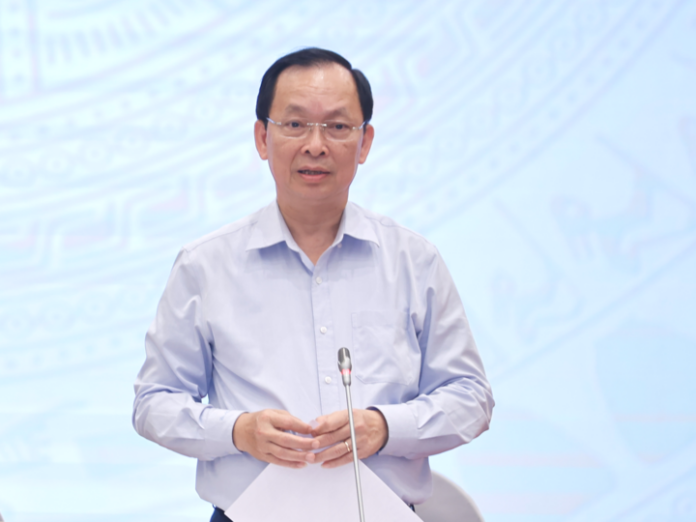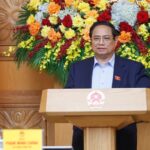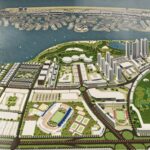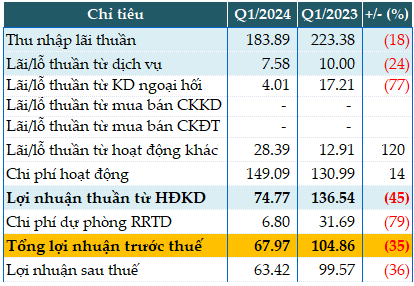Deputy Governor of the State Bank of Vietnam (SBV) Dao Minh Tu shared the information at the regular Government meeting for April 2025, held on the afternoon of May 6.
According to Deputy Governor Dao Minh Tu, following the Prime Minister’s instructions, the SBV has been actively working on developing and perfecting the mechanism for deploying the largest-ever credit package worth up to VND 500 trillion (approximately USD 20 billion).
“This is a strategic move, demonstrating a strong determination to boost the development of infrastructure and technology, two foundational sectors for sustainable long-term economic growth,” Mr. Tu stated.
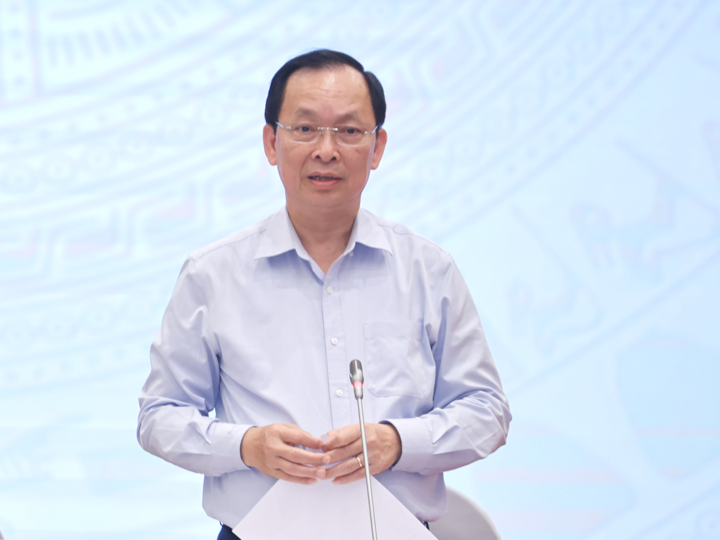
Deputy Governor Dao Minh Tu. (Photo: VGP)
Based on the resolute direction from the Government, the SBV clearly identifies this not merely as a credit policy but as a vital macroeconomic tool. It aims to provide financial resources for businesses investing in key infrastructure and digital technology. This also serves as a prerequisite to achieving the goal of double-digit GDP growth in the near future.
“In April, the SBV directly worked with 21 commercial banks to discuss the implementation plan for this credit package. Among them, the four large state-owned commercial banks (Big4), including Vietcombank, VietinBank, BIDV, and Agribank, were identified as the main forces, with each bank registering a commitment of VND 60 trillion. In addition, 12 large private banks registered VND 20 trillion each, and five smaller commercial banks registered approximately VND 4 trillion each,” said Deputy Governor Dao Minh Tu.
The VND 500 trillion credit package will focus on prioritizing businesses investing in two key areas: infrastructure and technology. Especially, projects in the field of digital technology, digital transformation, and smart manufacturing will be offered interest rate incentives of at least 1% lower than the current average. At the same time, the interest rate incentive period will be extended to a minimum of two years, providing favorable conditions for businesses to implement projects effectively.
Notably, the VND 500 trillion credit package will not utilize any state budget or foreign borrowings. Instead, commercial banks will use their mobilized resources to extend credit by restructuring loans, extending loan terms, and co-financing large projects. This approach ensures flexibility and reduces budget burdens while still strongly supporting sectors requiring medium and long-term capital.
However, Deputy Governor Dao Minh Tu also frankly pointed out two key issues that need to be clarified before the widespread disbursement of the VND 500 trillion credit package.
First, while the capital demand in infrastructure and technology sectors is enormous, it is necessary to pinpoint the specific beneficiaries of this preferential lending. The allocation must closely follow the Government’s directives and Resolution 57, ensuring a focused approach, avoiding overlaps, and maximizing capital efficiency. This is because, in reality, out of hundreds of thousands of projects, not all are suitable or urgent enough to receive support.
Second, balancing medium and long-term lending from the system’s short-term capital sources is also a significant challenge. Currently, commercial banks primarily mobilize short-term capital, so ensuring liquidity and system safety is imperative. Therefore, the SBV closely coordinates with relevant ministries and sectors, such as the Ministry of Industry and Trade, the Ministry of Construction, and the Ministry of Science and Technology, to jointly review and identify key projects and groups of enterprises that genuinely need access to this preferential credit package.
Lending to infrastructure projects with terms ranging from five to ten years requires flexible coordination and adherence to the principles of credit system safety. This is why the SBV actively requests the early issuance of documents from ministries and sectors, specifically identifying prioritized project lists, industries, and beneficiaries. This will enable banks to confidently implement the package and mitigate liquidity risks.
“In May, the SBV and commercial banks will continue to vigorously prepare and promptly implement the credit package as directed by the Government,” emphasized Mr. Tu.
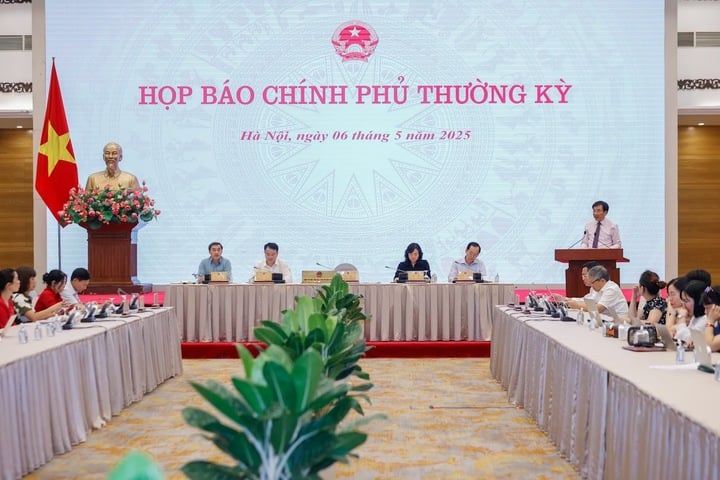
Overview of the regular Government meeting for April 2025. (Photo: VGP)
The VND 500 trillion credit package reflects the Government’s flexible and proactive governance approach. Accurate identification of beneficiaries, timely implementation, and efficient capital allocation will be prerequisites for achieving the dual goal of boosting growth and ensuring macroeconomic stability.
In the past, the Government and the Prime Minister have shown a particular interest in this program, aiming to support businesses. The Government has held meetings and worked with decisive directives, requiring functional agencies from central to local levels to coordinate closely to remove obstacles for businesses and create momentum for economic development.
Therefore, relevant ministries and sectors need to coordinate and clarify the list of prioritized investment projects, the ratio of state and socialized capital, and accurately identify beneficiaries, scopes, and investment plans. At least, they should provide data estimates close to reality so that the SBV and commercial banks can calculate capital balance and ensure the credit package stays on course (but this is currently lacking).
“While this credit package is a supportive policy, a lack of synchronization between budget capital and credit capital could push the entire banking system into a high-risk situation. Therefore, timely and responsible coordination among ministries and sectors is necessary to ensure the package’s effectiveness,” emphasized Deputy Governor Dao Minh Tu.
What Do Foreign Media Say About Vietnam Being One of the Six Countries Prioritized by the US for Tax Negotiations?
“During a recent session of the National Assembly, Prime Minister Pham Minh Chinh made an important announcement.”
Unlocking Private Sector Innovation: A Boundless Approach to Economic Growth
On the afternoon of May 8, Prime Minister Pham Minh Chinh chaired a meeting with the Policy Advisory Council to finalize the draft resolution of the National Assembly on special mechanisms and policies to promote the private economy. This crucial step forward aligns with Resolution 68 of the Political Bureau.
“The Rise of Vietnam’s Coastal Metropolis: Transforming a Humble District into Asia’s Next ‘Mini Dubai, Singapore’”
This mega-development is more than just a mere urban area; it is envisioned as an ecological, intelligent, and resort-style city.
Proposed Expressway Construction: Quang Ngai-Kon Tum
“Vietnam’s Ministry of Construction has proposed an ambitious plan to the Prime Minister for the development of a new expressway connecting Quang Ngai and Kon Tum provinces. This transformative infrastructure project promises to revolutionize inter-provincial connectivity and unlock new avenues for economic growth in the region. With a strategic vision, the expressway aims to bolster trade, enhance transportation efficiency, and catalyze socio-economic development, setting the stage for a vibrant and prosperous future for the communities it serves.”

